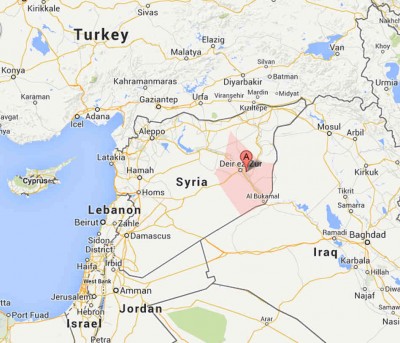Attack on Humanitarian Convoy in Syria, Used by US as a “Propaganda” Tool

As the details of Monday’s attack on a humanitarian convoy near Aleppo are yet to be determined and the United States and Russia argue about who could be the perpetrator, the incident might be used as a “propaganda instrument,” but analysts are divided on whose interests it serves.
A UN-Syrian Arab Red Crescent convoy carrying humanitarian aid for Syria’s Aleppo province was attacked late on Monday, according to the International Federation of Red Cross and Red Crescent Societies. As a result, 18 of 31 trucks were destroyed and at least 21 individuals were killed.
The tragic incident occurred amid a faltering ceasefire in Syria in force since September 12 just two days before an aircraft of the US-led anti-IS coalition carried out four airstrikes against positions of the Syrian army near Deir ez-Zor by mistake, leaving 62 personnel killed and some 100 wounded.
“Immediately upon signing the [US-Russia] agreement [September 12], the United States goes ahead and violates that agreement in a very carefully prepared operation directed against Syrian forces. It was not spontaneous, it was well-prepared,” Michel Chossudovsky, director of the Centre for Research on Globalization (CRG), told Sputnik.
“The convoy issue has been used as a propaganda instrument by the United States, as a means to distract attention from the US illegal air attacks, in violation of international law, which are a criminal undertaking, it’s a crime of aggression,” Chossudovsky continued.
Following the attack, White House Deputy National Security Adviser Ben Rhodes said it was an airstrike and the Syrian and Russian governments were the only entities that could have been responsible for it. The White House also questioned the continuation of the US-Russian military cooperation.
The Russian Defense Ministry, in turn, announced that it had studied the video of the attack and said that neither Russian nor Syrian government munitions had hit the aid convoy.
Spokesman Maj. Gen. Igor Konashenkov stated that analysis of the attack footage revealed no signs of bombs, suggesting that fire traces resulted from the offensive launched by Jabhat Fatah al Sham, formerly known as Nusra Front.
“The September 19 attack on the UN/Red Crescent humanitarian aid convoy was an airstrike, according to both US military sources who have intelligence-gathering mechanisms in southern Turkey, and according to Syrian eye-witnesses on the ground during the attack… The attack had to be either by the Syrian Air Force that uses Russian equipment/spare parts/training or by Russian aircraft,” Middle East Institute senior fellow Robert Ford believes.
Chossudovsky, however, disagrees and claims that Russia and Syria had no interest in bombing the convoy, “but the United States had.”
“I am not saying that they did it, but they used this event to smear Russia and the government of Bashar al Assad, as they have been doing right since the beginning of the war in 2011,” Chossudovsky highlighted.
Aid agencies working in Syria strongly condemned the attack and demanded that international powers take specific steps to secure a safe passage of the humanitarian aid to the regions in need. The attack forced the United Nations to halt aid deliveries across Syria. However, in-country operations of the UN Office for the Coordination of Humanitarian Affairs, including cross-border deliveries and air-drops, continue.

